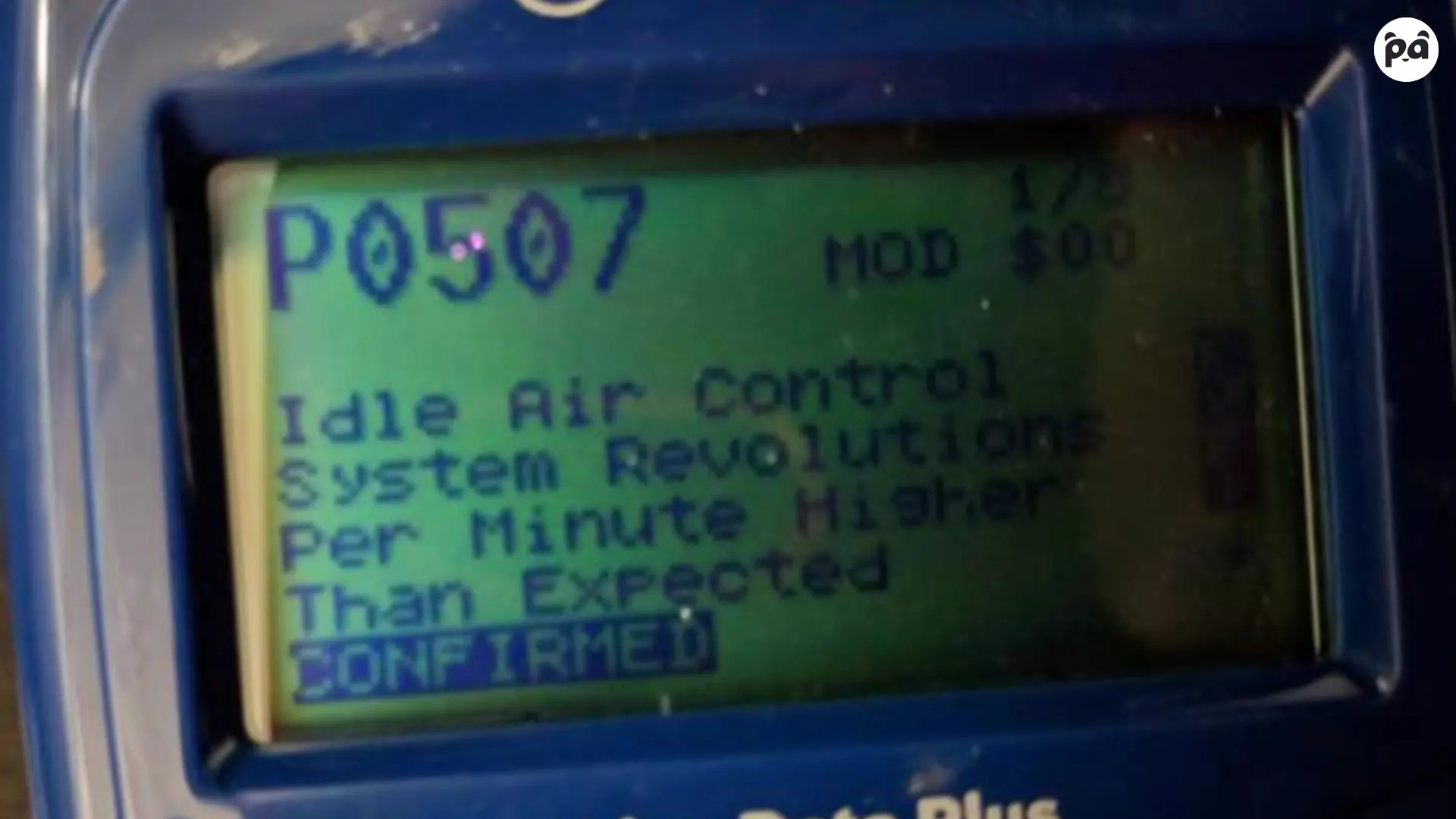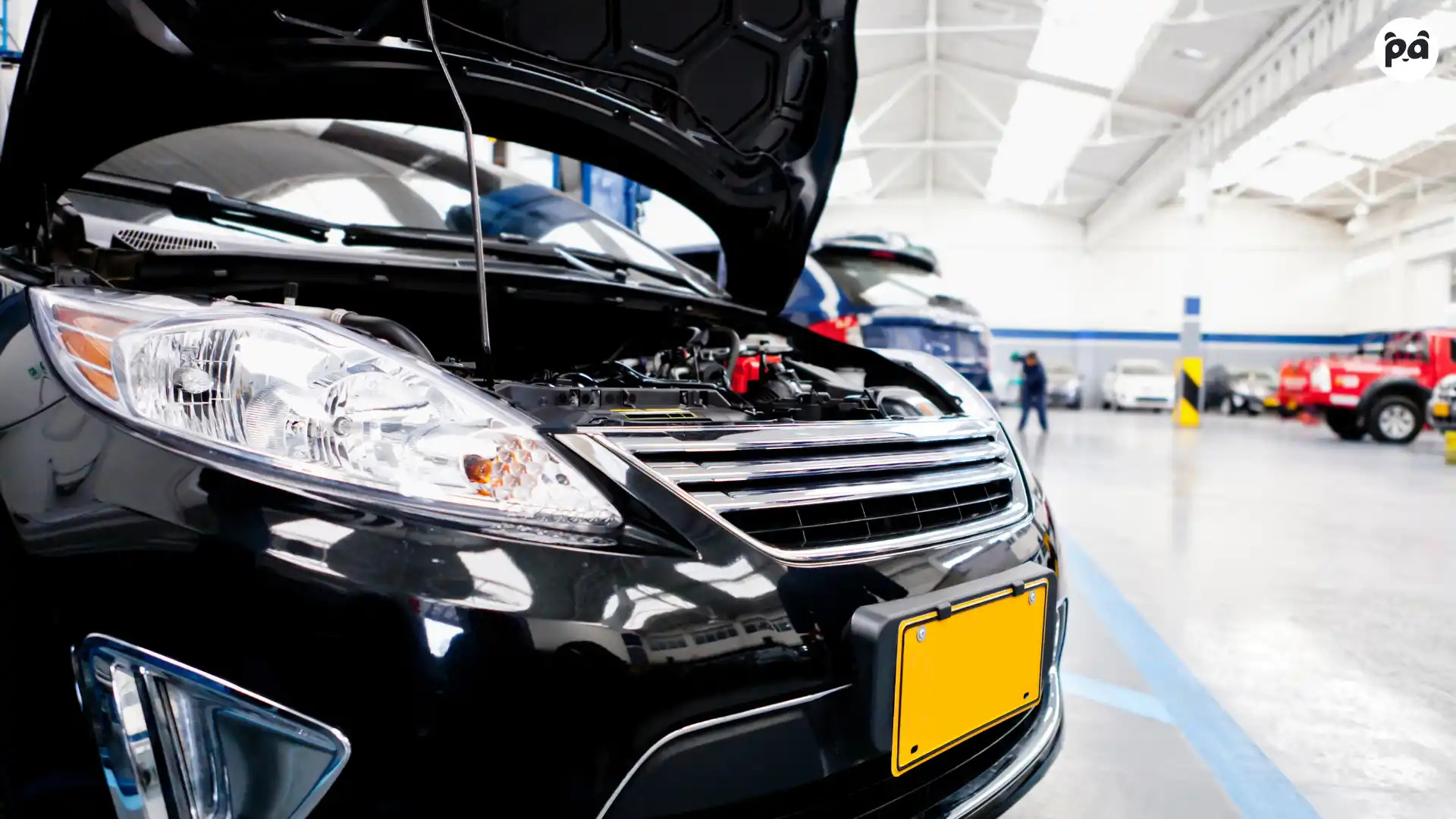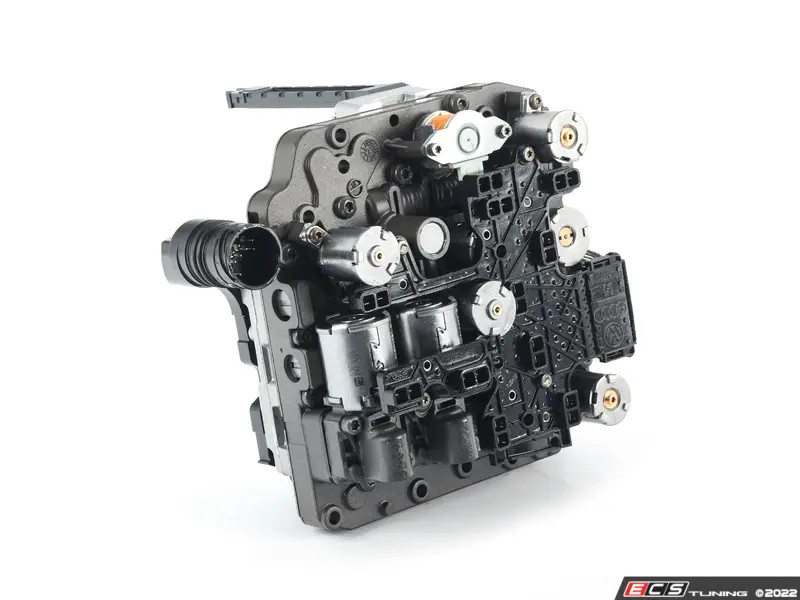

Is Audi Code P0507 Causing High Idle RPM?
Audi Code P0507, indicating an “Idle Air Control System RPM Higher Than Expected” issue, can lead to various drivability problems and increased fuel consumption. Addressing this issue promptly through careful diagnosis and repair is crucial for maintaining optimal engine performance. Contact AutoExplain.com via WhatsApp or email for expert remote technical support to resolve P0507 efficiently and professionally. Get access to specialized knowledge and skills to diagnose and fix a wide range of automotive issues quickly and effectively.
1. What is the Audi P0507 Code and What Does it Mean?
The Audi P0507 code signifies that the engine’s idle speed is higher than the manufacturer’s specified range. This diagnostic trouble code (DTC) is triggered when the Powertrain Control Module (PCM) detects that the engine’s revolutions per minute (RPM) at idle exceed the set parameters. The code indicates a problem within the idle air control (IAC) system, which is responsible for regulating the amount of air entering the engine when the throttle is closed. The code means that there is an issue with the idle air control system and needs attention.
The P0507 code could mean you are dealing with issues like:
- Vacuum Leaks: Unmetered air entering the engine.
- Throttle Body Issues: Dirty or malfunctioning throttle body.
- Faulty Idle Air Control (IAC) Valve: Malfunctioning IAC valve that regulates airflow.
- PCM Malfunctions: Rare cases involving issues with the PCM itself.
2. What are the Common Symptoms Associated with the Audi P0507 Code?
Common symptoms associated with the Audi P0507 code include a high idle speed, rough idling, stalling, and illuminated check engine light. These symptoms can affect the overall driving experience and fuel efficiency. Recognizing these symptoms early can help prevent further damage and ensure timely repairs.
The most common symptoms include:
- High Idle Speed: Engine RPM is noticeably higher than normal when idling.
- Rough Idling: Unstable or shaky idling, indicating inconsistent engine operation.
- Engine Stalling: The engine may stall, especially when coming to a stop.
- Check Engine Light: The malfunction indicator lamp (MIL) on the dashboard is illuminated.
- Poor Fuel Economy: Increased fuel consumption due to the engine running at higher RPMs than necessary.
 Engine Stalling or Dying at Stoplights
Engine Stalling or Dying at Stoplights
3. What are the Potential Causes of the P0507 Code in Audi Vehicles?
Potential causes of the P0507 code in Audi vehicles include vacuum leaks, a dirty or faulty throttle body, a malfunctioning idle air control (IAC) valve, or issues with the powertrain control module (PCM). Identifying the root cause is essential for effective repair. The idle air control system is essential for regulating the amount of air that enters the engine.
Some of the main causes include:
- Vacuum Leaks: Leaks in vacuum lines, intake manifold gaskets, or other components allowing unmetered air into the engine.
- Dirty or Faulty Throttle Body: Carbon buildup or mechanical issues affecting throttle plate operation.
- Malfunctioning IAC Valve: Failure of the IAC valve to properly regulate airflow.
- PCV System Issues: Problems with the Positive Crankcase Ventilation (PCV) system causing incorrect air-fuel mixture.
- PCM Issues: Rarely, a faulty PCM can cause the P0507 code.
- Incorrect Idle Speed Adjustment: If the idle speed is manually set too high, it can trigger the code.
4. How Can I Diagnose the Audi P0507 Code Accurately?
To accurately diagnose the Audi P0507 code, start by using an OBD-II scanner to confirm the presence of the code and check for any other related codes. Inspect vacuum lines for leaks, examine the throttle body for carbon buildup, and test the IAC valve’s functionality. A systematic approach is crucial for pinpointing the exact cause.
Here is a step-by-step diagnostic process:
- Retrieve Trouble Codes: Use an OBD-II scanner to read and record all diagnostic trouble codes.
- Inspect Vacuum Lines: Check all vacuum lines and connections for cracks, leaks, or disconnections.
- Examine Throttle Body: Inspect the throttle body for carbon buildup and clean if necessary using a throttle body cleaner.
- Test IAC Valve: Use a multimeter to test the IAC valve’s resistance and check for proper operation.
- Check PCV System: Inspect the PCV valve and hoses for any signs of damage or blockage.
- Monitor Live Data: Use the scanner to monitor live data from the IAC valve, throttle position sensor (TPS), and other relevant sensors to identify any anomalies.
- Perform Smoke Test: Conduct a smoke test to identify any hidden vacuum leaks.
- Check for Software Updates: Ensure the PCM has the latest software updates, as outdated software can sometimes cause false codes.
5. What are the Step-by-Step Instructions for Fixing the Audi P0507 Code?
To fix the Audi P0507 code, follow these steps:
- Address any vacuum leaks by repairing or replacing damaged lines or components.
- Clean the throttle body thoroughly to remove carbon deposits.
- Replace the IAC valve if it is faulty.
- Reset the PCM and perform an idle relearn procedure.
- Verify the repair by clearing the code and monitoring the engine’s idle speed.
Following the step-by-step instructions ensures that the right steps are taken and helps to ensure that you fix the car properly.
Here is a more detailed approach to fixing the P0507 code:
- Repair Vacuum Leaks:
- Locate and repair any vacuum leaks using a smoke machine or visual inspection.
- Replace cracked or damaged vacuum hoses and ensure all connections are secure.
- Clean Throttle Body:
- Remove the air intake duct to access the throttle body.
- Spray throttle body cleaner onto a clean rag and wipe away carbon deposits from the throttle plate and bore.
- Ensure the throttle plate moves freely without sticking.
- Replace IAC Valve:
- Disconnect the electrical connector and remove the IAC valve from the throttle body.
- Install the new IAC valve and tighten it to the manufacturer’s specified torque.
- Reconnect the electrical connector.
- Reset PCM and Perform Idle Relearn:
- Use an OBD-II scanner to clear the P0507 code and any other stored codes.
- Perform an idle relearn procedure as specified by Audi (this may involve disconnecting the battery for a period or using the scanner to initiate the relearn process).
- Verify Repair:
- Start the engine and allow it to idle.
- Monitor the engine RPM to ensure it is within the manufacturer’s specified range.
- Take the vehicle for a test drive to confirm that the code does not return.
 Check for Wire and Connector Damage
Check for Wire and Connector Damage
6. What Tools and Equipment are Needed to Resolve the P0507 Code?
To resolve the P0507 code, you will need an OBD-II scanner, vacuum gauge, throttle body cleaner, replacement vacuum lines, a new IAC valve (if necessary), and basic hand tools. Having the right tools ensures the diagnostic and repair processes are efficient and accurate. These tools can help in the diagnosing and repairing process.
Essential tools and equipment include:
- OBD-II Scanner: To read and clear diagnostic trouble codes and monitor live data.
- Vacuum Gauge: To test vacuum levels and identify leaks.
- Throttle Body Cleaner: To remove carbon deposits from the throttle body.
- Multimeter: To test the IAC valve’s resistance and electrical connections.
- Smoke Machine: To detect vacuum leaks.
- Basic Hand Tools: Wrenches, screwdrivers, pliers, and sockets for removing and installing components.
- Replacement Parts: Vacuum lines, IAC valve, throttle body gasket, etc., as needed.
7. How Much Does it Typically Cost to Repair the P0507 Code on an Audi?
The cost to repair the P0507 code on an Audi can vary widely, depending on the cause and the parts required. Simple fixes like cleaning the throttle body might cost around $100-$200, while replacing the IAC valve or addressing vacuum leaks could range from $200 to $500 or more. More complex issues, such as PCM problems, can be even more expensive. Being able to estimate the cost can allow you to know ahead of time.
Here’s a breakdown of potential costs:
- Throttle Body Cleaning: $100 – $200 (including labor)
- IAC Valve Replacement: $200 – $400 (parts and labor)
- Vacuum Leak Repair: $150 – $500 (depending on the location and complexity of the leak)
- PCM Replacement: $500 – $1500 (if necessary, including programming)
- Diagnostic Fee: $75 – $150 (for initial diagnosis)
8. Can the Audi P0507 Code Cause Damage if Left Unattended?
Yes, the Audi P0507 code can cause damage if left unattended. A high idle speed can lead to increased fuel consumption, rough idling can cause engine stress, and stalling can create unsafe driving conditions. Addressing the issue promptly prevents further complications and potential damage to the engine and related systems. Being pro-active in fixing the issue will reduce any possible issues that might come up.
Potential consequences of ignoring the P0507 code include:
- Increased Fuel Consumption: Higher idle speed wastes fuel.
- Engine Stress: Rough idling and high RPMs can strain engine components.
- Unsafe Driving Conditions: Stalling can occur unexpectedly, posing a safety risk.
- Catalytic Converter Damage: Prolonged high idle can cause the catalytic converter to overheat.
- Increased Emissions: Higher emissions output, potentially leading to failed emissions tests.
9. Are There Any Specific Audi Models That Are More Prone to the P0507 Code?
While the P0507 code can occur in various Audi models, some models with higher mileage or specific engine types may be more prone to this issue. Regular maintenance and timely inspections can help prevent the occurrence of the P0507 code in any Audi vehicle. Maintaining your vehicle can increase the chances of avoiding the P0507 code.
Models that might be more susceptible include:
- Audi A4: Especially models with the 1.8T or 2.0T engines.
- Audi A6: Models from the late 1990s to the mid-2000s.
- Audi TT: Particularly those with the 1.8T engine.
- Audi Q5: Depending on the engine type and maintenance history.
10. What Maintenance Practices Can Help Prevent the P0507 Code in Audi Vehicles?
To prevent the P0507 code in Audi vehicles, follow these maintenance practices:
- Regularly inspect and replace vacuum lines to prevent leaks.
- Clean the throttle body every 30,000 miles to remove carbon buildup.
- Ensure the air filter is clean to maintain proper airflow.
- Follow the manufacturer’s recommended maintenance schedule for tune-ups and inspections.
Being diligent in doing these maintenance practices will assist in avoiding future repairs.
Preventative maintenance measures include:
- Regular Vacuum Line Inspection: Check and replace vacuum lines regularly to prevent leaks.
- Throttle Body Cleaning: Clean the throttle body every 30,000 miles to remove carbon buildup.
- Air Filter Replacement: Replace the air filter as recommended to ensure proper airflow.
- PCV System Maintenance: Regularly inspect and maintain the PCV system to prevent issues.
- Scheduled Tune-Ups: Follow the manufacturer’s recommended maintenance schedule for tune-ups and inspections.
Experiencing the Audi P0507 code can be frustrating, but with the right knowledge and tools, it can be resolved efficiently. If you’re a technician facing this issue, remember that AutoExplain.com offers expert remote technical support to help you diagnose and fix the problem quickly. Contact us via WhatsApp at (+84)967469410 or email us at [email protected] for professional assistance. Our services include ECU programming, BCM and TCM support, navigation updates, and key programming, all designed to get you back on track with confidence. Visit AutoExplain.com for more information and to explore how we can support your automotive repair needs. Our office is located at 1500 N Grant ST Sten Denver, CO 80203.

65535 Audi Fault Code: Expert Solutions and Fixes
Audi A3 Trouble Code 00796: Diagnosis, Solutions, and Expert Insights
Audi DTC 16347:014 – Expert Diagnosis and Solutions

Josh William
Josh William is a seasoned automotive expert and technical writer at AutoExplain. With a background as an automotive technician, he brings hands-on experience and deep industry knowledge to his writing.




